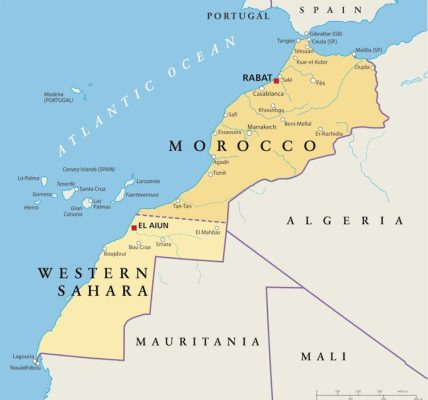From Kabul to the catwalk – the surprising global history behind fashion’s fur revival
The winter season of 2024-25 marked a resurgence of fur clothing – both faux and real – in fashion across Europe and North America. Shearling jackets and embroidered “Penny Lane coats” featured widely in reports on the latest fashion trends. Vintage fur coats are also back in vogue.
To many, the resurgence came as a surprise. The anti-fur movement, especially influential in the 1980s, continues to shape perceptions of fur. In the 2010s, cities including New York and Los Angeles banned the use of fur to make clothes. The UK meanwhile banned the farming of fur-bearing animals, and, alongside the EU, has committed itself to legislating against all fur imports.
Just last year the town of Worthing, in England, debated whether their mayor should wear ceremonial robes trimmed with fur or not. Despite these trends, many young people have embraced the renewed trend of wearing real fur.
Some clothes made from animal skins became popular during the counter-cultural movement of the 1960s, but historically, fur has mostly marked status, wealth and luxury. Today, many critics interpret fur’s return to fashion as a cultural expression of rightwing politics.
Looking for something good? Cut through the noise with a carefully curated selection of the latest releases, live events and exhibitions, straight to your inbox every fortnight, on Fridays. Sign up here.
Fur is prominent in the “boom boom” fashion trend, which emphasises excess and “male-coded values”. It has been described by fashion journalists as “over-the-top and unashamed about its own greed and lack of wokeness”.
Fur clothing is a reminder of the moral tensions between need and desire, and luxury and excess. In addition to being inter-generational, these debates are also about gender. For much of the 20th century, fur coats symbolised femininity, erotic power and class position in the west. But by the 1980s, advertising campaigns depicted women who wore fur as either stupid and unthinking or thinking and unspeakably cruel, leading many to jettison it.
Anti-fur protests were held across the US in 1994.
Fur’s return to fashion has injected old debates with new significance. Some young people are willing to wear faux fur because it does not involve killing animals. But others argue that, because it is made from synthetic material, faux fur is actually more environmentally damaging and prefer to wear the real thing. They claim that wearing vintage fur is a form of “sustainable consumption” but are challenged by those who argue that this fashion trend ultimately justifies killing animals to make clothes.
The boom boom trend is said to embody a contemporary expression of 1980s “conspicuous consumerism”, but in an era of economic austerity the adoption of fur by young people suggests the clothes they wear identify their desires rather than their financial reality.
A global history of fur
Today, as in the 1980s, the perspectives, interests and experiences of non-Europeans are often unheard in debates around fur. A decline of fur-bearing animal populations in North America and Siberia from the early 19th century, led to a global expansion in fur farming.
Read more:
How central Asian Jews and Muslims worked together in London’s 20th-century fur and carpet trade
From the 1850s, for example, Central Asia supplied furs to Europe and North America. Local artisans cured the pelts of karakul lambs – a native breed – to yield a rich and glossy fur. In central and south Asia, men of high status wore karakul hats; in Europe and America, they were mostly used to make women’s coats.
After the Russian revolution of 1917, many nomadic and semi-nomadic pastoralists, who raised sheep and other animals, left central Asia and moved with their flocks to neighbouring Afghanistan. The trade in karakul fur grew in the country, and foreign currency reserves came to depend on lambskins sold at auctions in London and New York.
In the 1960s, sheepskin coats made in Afghanistan – known as “Afghans” – became popular in the west, being worn by stars including Brian Jones of the Rolling Stones. The 1969 British edition of Vogue featured an interview with an icon of “oriental chic”, the “beautiful, dashing, intelligent, adventurous” Afghan socialite, Safia Tarzi, who lived in Paris, and ran a boutique clothing shop in Kabul.
The Afghan coat enjoyed a resurgence in 2000 having been worn by the character Penny Lane (Kate Hudson) in the film Almost Famous.
Read more:
Friday essay: how ‘Afghan’ coats left Kabul for the fashion world and became a hippie must-have
In the 1980s, the anti-fur campaign contributed to a declining market for karakul. For decades, rumours of Central Asian shepherds extracting lambs from the wombs of sheep to ensure a steady yield of delicate pelts had circulated. Moral opposition to the practice was not confined to the west.
During my research on globally dispersed activists, intellectuals and merchants from Afghanistan, a man from Afghanistan, now based in London, told me that his father banned his family from wearing karakul hats because sheep and their lambs were treated cruelly.
In the 1990s, civil war destroyed much of the infrastructure of the karakul industry in Afghanistan, but a trickle of pelts reached auction houses located in Frankfurt, Copenhagen and Helsinki.
In the 2000s, international development organisations attempted to revive the trade, though sales never returned to anyway near the levels of the 1970s. By the 2010s, families in northern Afghanistan struggling economically opted to send sons to travel illegally to Turkey to find work as shepherds for commercially oriented Turkish farmers.
Promotional videos of fashion houses occasionally touch on the Penny Lane coat’s ties to Afghanistan, but media coverage of fur fashions rarely address its historical connections to central Asia.
Magnus Marsden received funding from the Arts and Humanities Research Council including for the research upon which this article is based.



